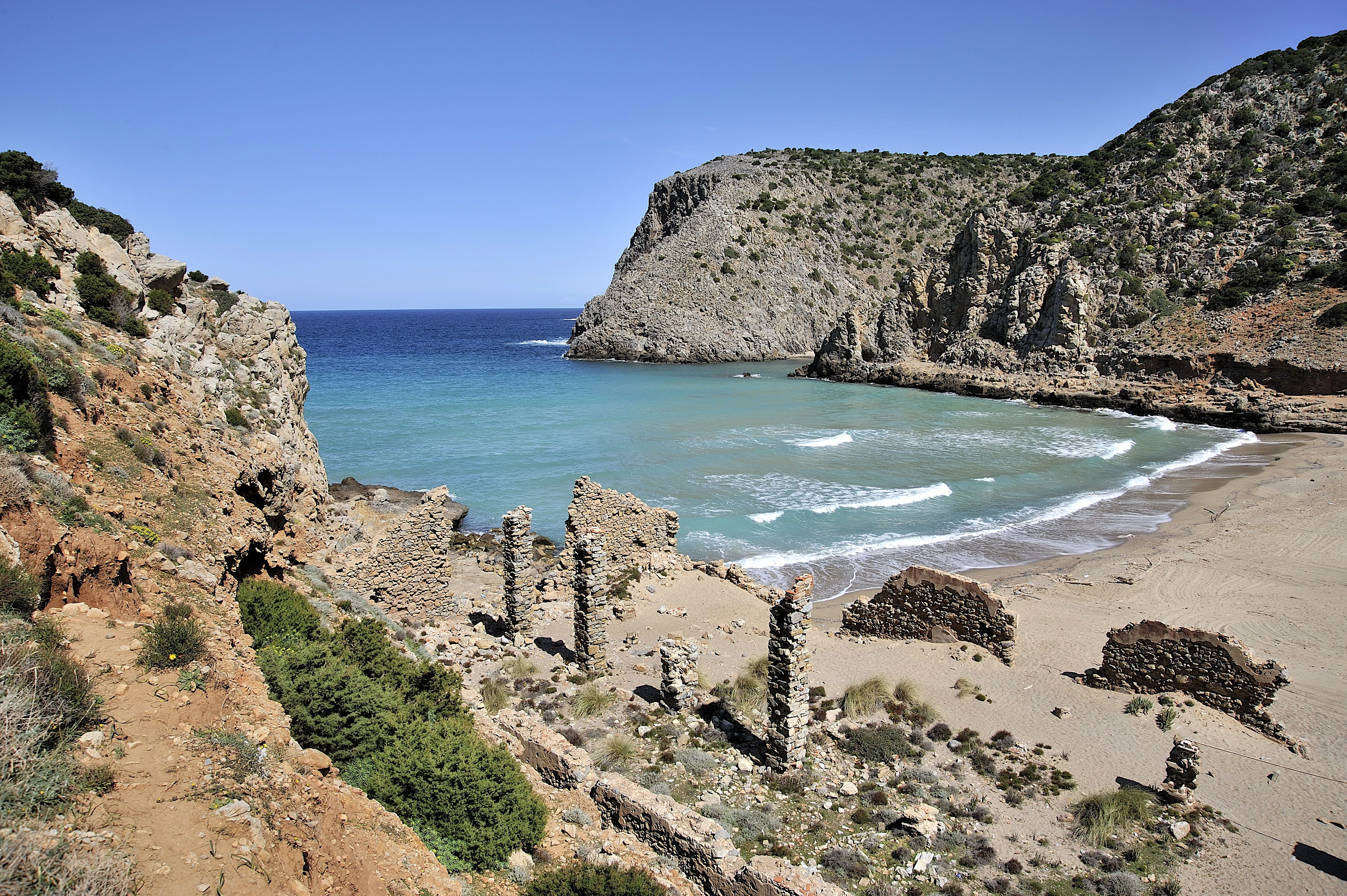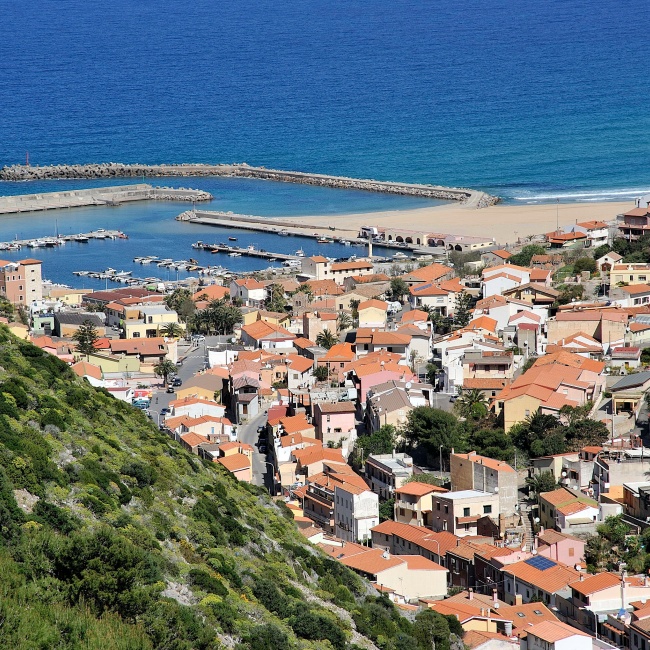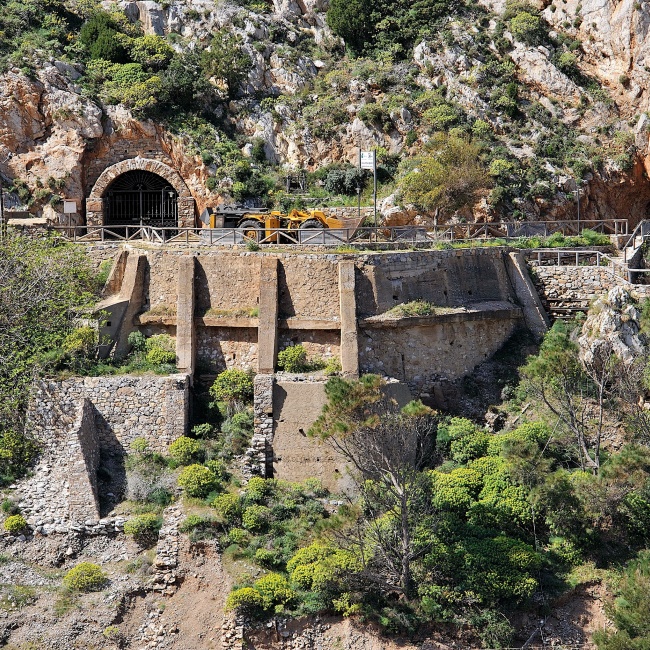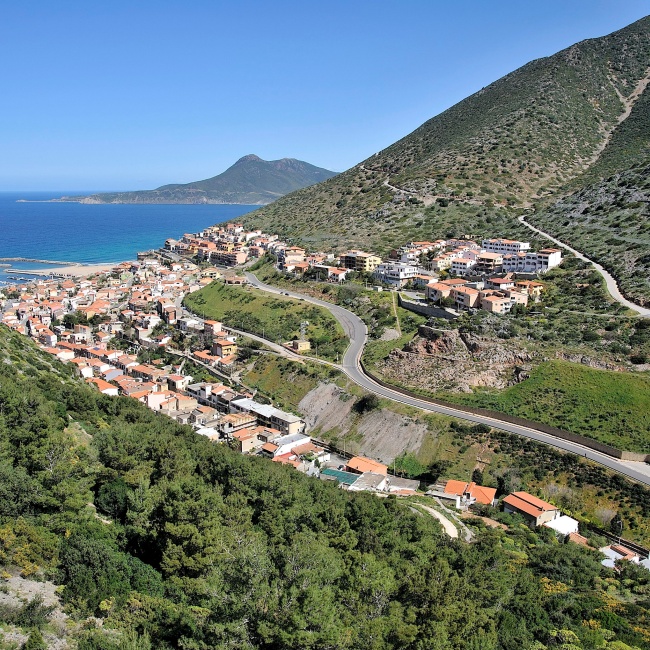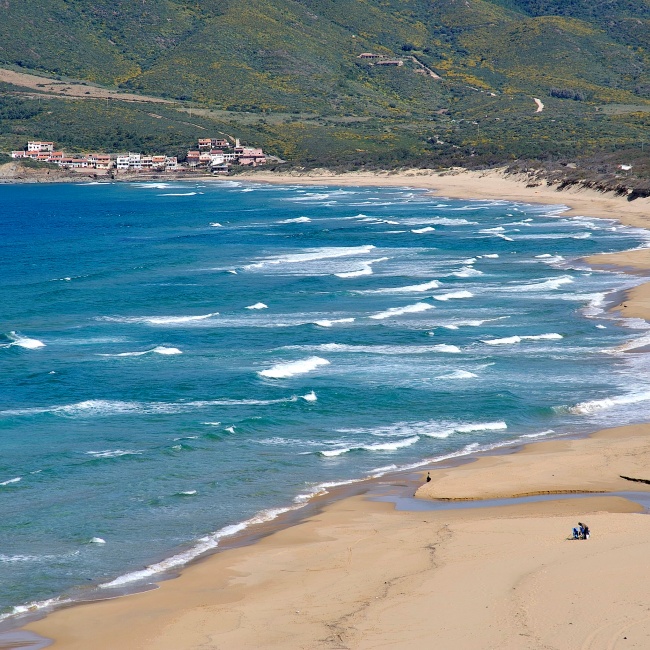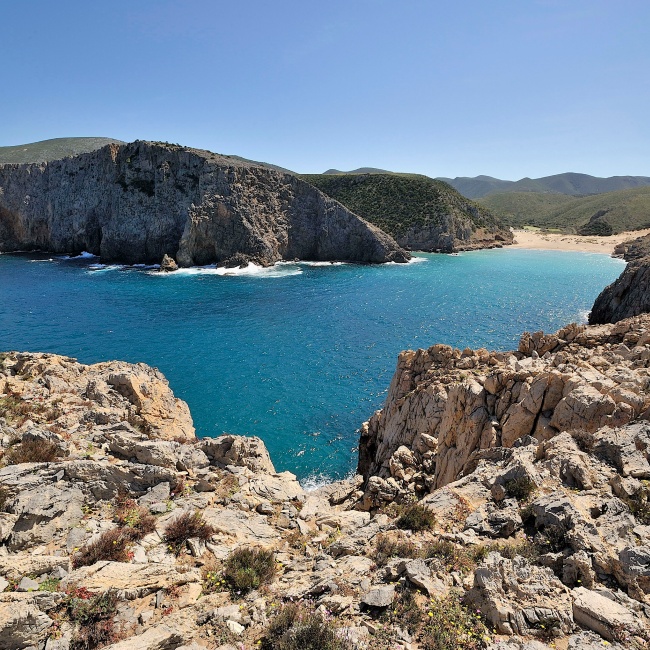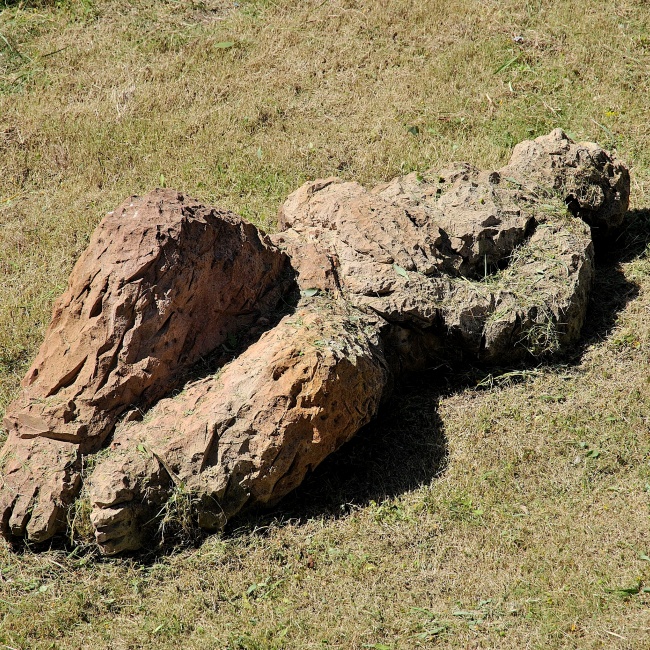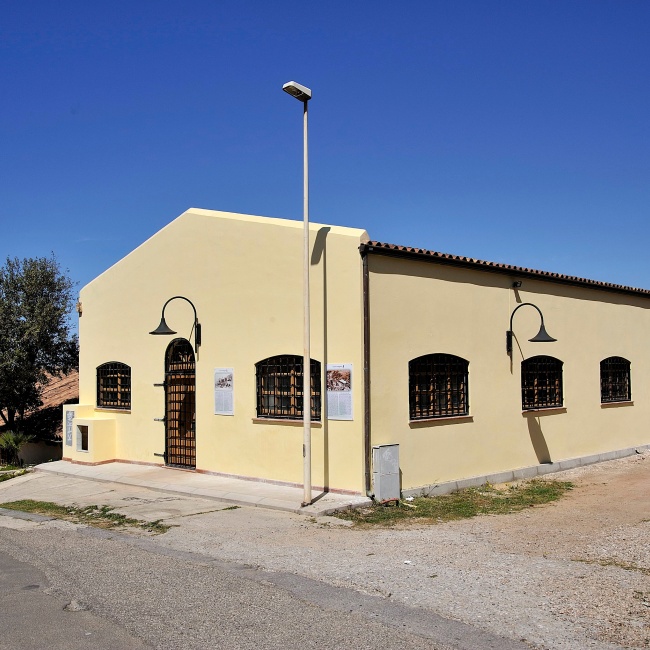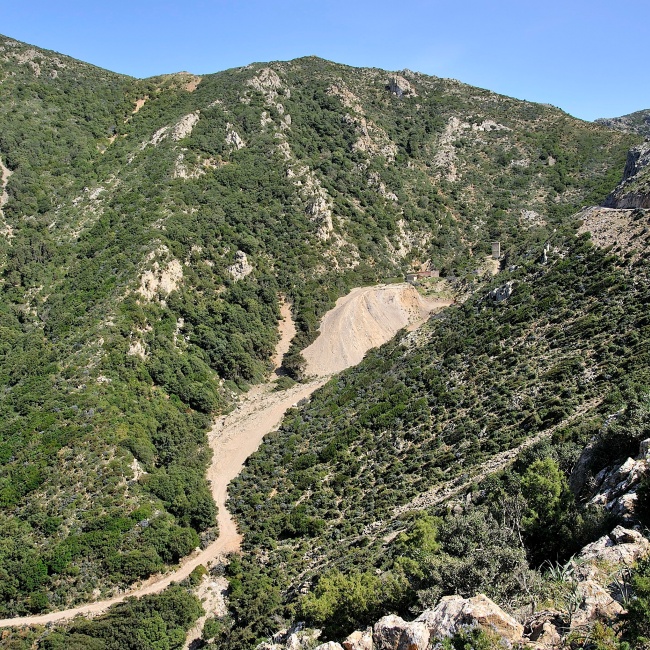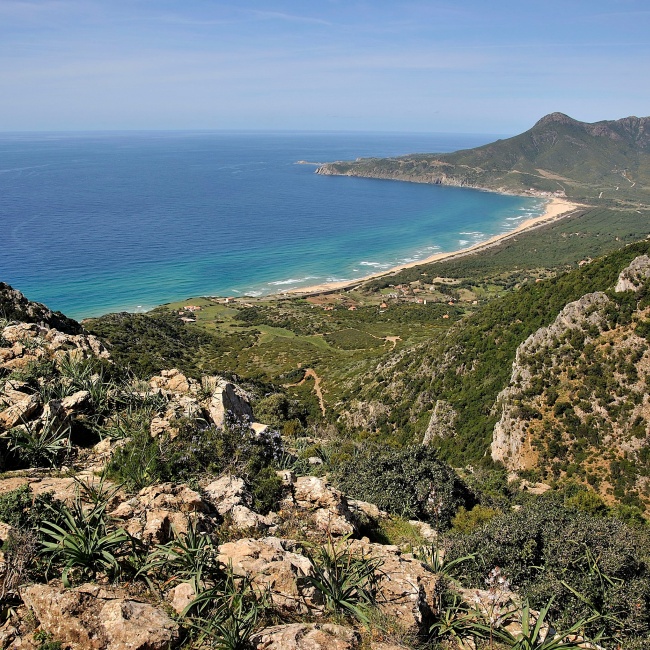Buggerru
Speaking of Buggerru means speaking of mines, of miners and of the sea. The town was founded in 1864, around the activities surrounding the Malfidano mine and soon became an internationally known mining centre.
The signs of its history are indelible and bring a very peculiar charm to the village that is encompassed by imposing mining facilities, tenaciously grasped to the crags of the Canale Malfidano valley and overlooks the sea with splendour.
Small houses crowded together recall the efforts of a sunken world that is narrated by every street corner and piazza: the Museo Civico (Civic Museum) is dedicated to the history of those men who lived immersed in the toil of mining work; the Galleria Henry, an imposing example of mining engineering that overlooks the cliff and village; the silent Laveria Malfidano washhouse adjacent to the beach; the monument by sculptor Pinuccio Sciola dedicated to the miners who lost their lives on 4 September 1904 during the tragically renowned Slaughter of Buggerru. Today, Buggerru redeems its past of toil and fatigue and is introduced as a cultural destination dedicated to tourism.
Imposing cliffs profoundly denote the coastal landscape that alternate with extended beaches like those of San Nicolò and Portixeddu, surrounded by flourishing vegetation that covers the nearby dunes. Only the course of the Mannu River interrupts the beaches as it flows into the sea. Not far from the village, the coast offers other views. In the direction of Masua, the ghost mining village of Plantu Sartu stands before reaching the beach of Cala Domestica, a small inlet surrounded by rocky walls where the ruins of mining facilities once again recall the history of the area.
